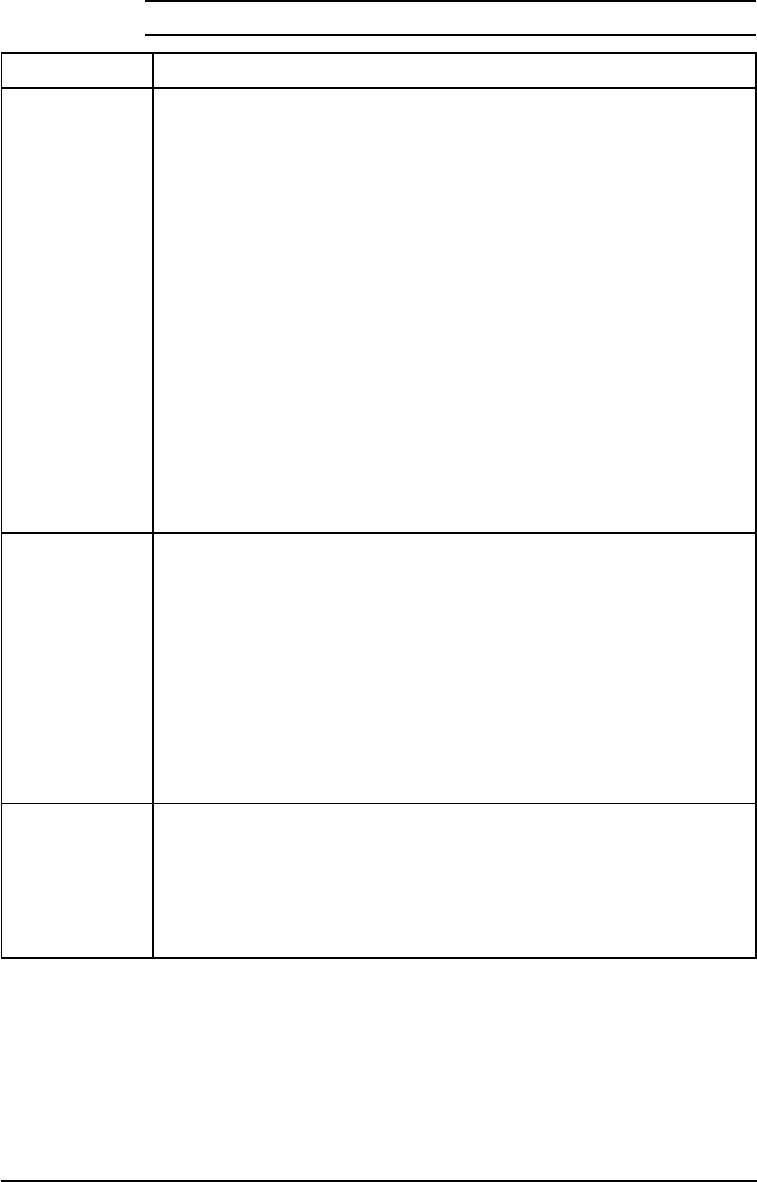
Table 5-2 Media Use Guidelines
Media Type Guidelines
Paper and
Preprinted Forms
• For best results, use conventional 20-lb (75 g/m
2
) xerographic paper. Make sure the paper is
of good quality and free of cuts, nicks, tears, spots, loose particles, dust, wrinkles, voids, and
curled or bent edges.
• Do not use paper with cutouts or perforations (including standard pre-punched paper)
with
holes 8 mm in diameter or larger.
• Do not use letterhead papers that are printed with low-temperature inks, such as those used in
some types of thermography.
• Use only colored papers or preprinted forms that use inks compatible with your printer’s fusing
temperature (392°F/200°C for 0.1 second).
• Keep paper stored in moisture-proof wrapping to prevent changes in moisture content that
may cause poor print quality, jamming, or curling.
• Avoid paper with ragged or cut edges to prevent feeding problems.
• Do not use paper heavier than 28-lb (105 g/m
2
) from trays other than Tray 1. Tray 1 can feed
16-lb Bond to 110-lb Index (60 - 199 g/m
2
) paper. Heavier paper may cause misfeeds,
stacking problems, paper jams, poor toner fusing, poor print quality, and excessive mechanical
wear.
• Do not use paper that is very rough, very smooth, or embossed. Such paper may cause
feeding or print quality problems, and rough papers may have poor toner adhesion.
Adhesive Labels
• Use only labels recommended for use in laser printers.
• Use only the Left Output Bin for printing labels.
• The adhesive material should be stable at the 392° F/200° C temperatures encountered in the
fusing process. None of the adhesive between the labels should be exposed.
• Use labels with no exposed areas between labels. Using label stock with spaces between
labels often causes labels to peel off during the printing cycle, causing serious jamming
problems. Use a sheet of labels only once.
• Labels must lie flat with no more than 0.5 in (13 mm) of curl in any direction.
• Do not use labels that have separated from the backing sheet or with wrinkles, bubbles, or
other indications of delamination.
Overhead
Transparencies
• Overhead transparencies used in HP LaserJet printers must be able to withstand the
392°F/200°C temperature encountered in the fusing process.
• Use only transparencies recommended for use in laser printers. Because transparency films
tend to stick to each other, remove each transparency from the output bin before printing the
next one.
• Use only the Left or Top Output Bins for printing transparencies.
5-6 Print Tasks EN


















